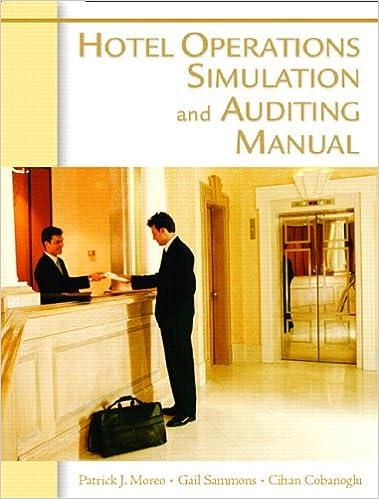Question
Need 9-34 answered, but requires 9-33 . 9-33. Unitwide versus Department AllocationAdministrative (Service) Function (LO 9-2, 3) The Personnel Department at Hernandez Bros. is centralized
Need 9-34 answered, but requires 9-33.
9-33. Unitwide versus Department AllocationAdministrative (Service) Function
(LO 9-2, 3)
The Personnel Department at Hernandez Bros. is centralized and provides services to the two operating units: Miami and New York. The Miami unit is the original unit of the company and is well established. The New York unit is new, much like a start-up company. The costs of the Personnel Department are allocated to each unit based on the number of employees in order to determine unit profitability. The current rate is $300 per employee. Data for the fiscal year just ended show the following:
| Miami | New York | |
| Number of employees | 1,900 | 600 |
| Number of new hires | 35 | 100 |
| Number of employees departing | 15 | 50 |
Page 356
Required
Compute the cost allocated to each unit using the current allocation system.
Livan, the manager of the Miami unit, is unhappy with the allocation from Personnel. He believes that he gets little benefit other than the occasional hire and termination help. He asks the controller's office to estimate the amount of Personnel Department cost associated with routine personnel matters (benefits, and so on) and those associated with hiring employees and assisting with departing employees (transitions). The controller responds that if they separated the overhead costs on this basis, the rates would be $80 per employee for routine matters and $2,750 for each transition (each hiring and each departure counts as one transition).
Recompute the costs allocated to each unit using the separate rates for routine and transitional matters.
9-34. Unitwide versus Department AllocationDecision Making
(LO 9-1, 9-2, 3)
Refer to Exercise 9-33. Orlando, the manager of the New York unit, is unhappy with the results of the controller's study. He asks the controller to develop separate rates for fixed and variable costs in the Personnel Department. The controller reports back to Orlando that the rates would be as follows:
| Allocation based on | Variable Rate | Fixed Rate | Total Rate |
| Employees | $20 per employee | $60 per employee | $80 per employee |
| Transitions | $750 per transition | $2,000 per transition | $2,750 per transition |
Required
Orlando argues that New York should only be allocated the variable costs from this system, because the company would have to pay the fixed costs even if New York did not exist. Compute the cost allocated to each unit using the approach Orlando prefers.
Do you agree with Orlando? Explain.
Step by Step Solution
There are 3 Steps involved in it
Step: 1

Get Instant Access to Expert-Tailored Solutions
See step-by-step solutions with expert insights and AI powered tools for academic success
Step: 2

Step: 3

Ace Your Homework with AI
Get the answers you need in no time with our AI-driven, step-by-step assistance
Get Started


